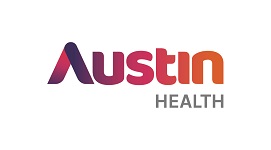Please use this identifier to cite or link to this item:
https://ahro.austin.org.au/austinjspui/handle/1/35063Full metadata record
| DC Field | Value | Language |
|---|---|---|
| dc.contributor.author | Sadjadi, Mahan | - |
| dc.contributor.author | von Groote, Thilo | - |
| dc.contributor.author | Weiss, Raphael | - |
| dc.contributor.author | Strauß, Christian | - |
| dc.contributor.author | Wempe, Carola | - |
| dc.contributor.author | Albert, Felix | - |
| dc.contributor.author | Langenkämper, Marie | - |
| dc.contributor.author | Landoni, Giovanni | - |
| dc.contributor.author | Bellomo, Rinaldo | - |
| dc.contributor.author | Khanna, Ashish K | - |
| dc.contributor.author | Coulson, Tim G | - |
| dc.contributor.author | Meersch, Melanie | - |
| dc.contributor.author | Zarbock, Alexander | - |
| dc.date | 2024 | - |
| dc.date.accessioned | 2024-02-07T04:14:31Z | - |
| dc.date.available | 2024-02-07T04:14:31Z | - |
| dc.date.issued | 2024-01-30 | - |
| dc.identifier.citation | Anesthesia and Analgesia 2024-01-30 | en_US |
| dc.identifier.issn | 1526-7598 | - |
| dc.identifier.uri | https://ahro.austin.org.au/austinjspui/handle/1/35063 | - |
| dc.description.abstract | Vasoplegia is common after cardiac surgery, is associated with hyperreninemia, and can lead to acute kidney stress. We aimed to conduct a pilot study to test the hypothesis that, in vasoplegic cardiac surgery patients, angiotensin-II (AT-II) may not increase kidney stress (measured by [TIMP-2]*[IGFBP7]). We randomly assigned patients with vasoplegia (cardiac index [CI] > 2.1l/min, postoperative hypotension requiring vasopressors) and Δ-renin (4-hour postoperative-preoperative value) ≥3.7 µU/mL, to AT-II or placebo targeting a mean arterial pressure ≥65 mm Hg for 12 hours. The primary end point was the incidence of kidney stress defined as the difference between baseline and 12 hours [TIMP-2]*[IGFBP7] levels. Secondary end points included serious adverse events (SAEs). We randomized 64 patients. With 1 being excluded, 31 patients received AT-II, and 32 received placebo. No significant difference was observed between AT-II and placebo groups for kidney stress (Δ-[TIMP-2]*[IGFBP7] 0.06 [ng/mL]2/1000 [Q1-Q3, -0.24 to 0.28] vs -0.08 [ng/mL]2/1000 [Q1-Q3, -0.35 to 0.14]; P = .19; Hodges-Lehmann estimation of the location shift of 0.12 [ng/mL]2/1000 [95% confidence interval, CI, -0.1 to 0.36]). AT-II patients received less fluid during treatment than placebo patients (2946 vs 3341 mL, P = .03), and required lower doses of norepinephrine equivalent (0.19 mg vs 4.18mg, P < .001). SAEs were reported in 38.7% of patients in the AT-II group and in 46.9% of patients in the placebo group. The infusion of AT-II for 12 hours appears feasible and did not lead to an increase in kidney stress in a high-risk cohort of cardiac surgery patients. These findings support the cautious continued investigation of AT-II as a vasopressor in hyperreninemic cardiac surgery patients. | en_US |
| dc.language.iso | eng | - |
| dc.title | A Pilot Study of Renin-Guided Angiotensin-II Infusion to Reduce Kidney Stress After Cardiac Surgery. | en_US |
| dc.type | Journal Article | en_US |
| dc.identifier.journaltitle | Anesthesia and Analgesia | en_US |
| dc.identifier.affiliation | From the Department of Anesthesiology, Intensive Care and Pain Medicine, University Hospital Münster, Münster, Germany. | en_US |
| dc.identifier.affiliation | Intensive Care | en_US |
| dc.identifier.affiliation | Institute of Biostatistics and Clinical Research, University of Münster, Münster, Germany. | en_US |
| dc.identifier.affiliation | Department of Intensive Care and Anesthesia, IRCCS San Raffaele Scientific Institute, Milan, Italy.;Department of Anesthesia and Intensive Care, School of Medicine, Vita-Salute San Raffaele University, Milan, Italy. | en_US |
| dc.identifier.affiliation | Department of Critical Care, The University of Melbourne, Melbourne, Australia.;Australian and New Zealand Intensive Care Research Centre, School of Public Health and Preventive Medicine, Monash University, Melbourne, Victoria, Australia. | en_US |
| dc.identifier.affiliation | Department of Anesthesiology, Section on Critical Care Medicine, School of Medicine, Wake Forest University, Atrium Health Wake Forest Baptist Medical Center, Winston-Salem, North Carolina.;Outcomes Research Consortium, Cleveland, Ohio.;Perioperative Outcomes and Informatics Collaborative (POIC), Winston-Salem, North Carolina; and. | en_US |
| dc.identifier.affiliation | Department of Anesthesiology and Perioperative Medicine, The Alfred Hospital, Melbourne, Victoria, Australia; Department of Critical Care, University of Melbourne, Melbourne, Victoria, Australia. | en_US |
| dc.identifier.affiliation | Department of Anesthesiology, Intensive Care and Pain Medicine, University Hospital Münster, Münster, Germany. | en_US |
| dc.identifier.doi | 10.1213/ANE.0000000000006839 | en_US |
| dc.type.content | Text | en_US |
| dc.identifier.pubmedid | 38289858 | - |
| item.languageiso639-1 | en | - |
| item.fulltext | No Fulltext | - |
| item.cerifentitytype | Publications | - |
| item.openairecristype | http://purl.org/coar/resource_type/c_18cf | - |
| item.openairetype | Journal Article | - |
| item.grantfulltext | none | - |
| crisitem.author.dept | Intensive Care | - |
| crisitem.author.dept | Data Analytics Research and Evaluation (DARE) Centre | - |
| crisitem.author.dept | Anaesthesia | - |
| Appears in Collections: | Journal articles | |
Items in AHRO are protected by copyright, with all rights reserved, unless otherwise indicated.
